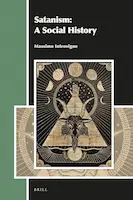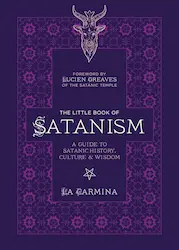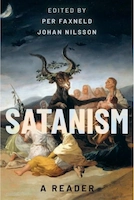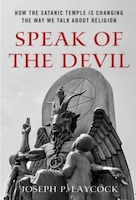Satanic symbolism, a concept steeped in profound intrigue and often surrounded by contentious debates, occupies a unique place at the crossroads of history and politics. Its journey through time is not just a tale of religious or mythical evolution, but also a narrative deeply embedded in the fabric of societal change and political discourse.
This article aims to dissect and understand the multifaceted roles that satanic symbolism has played throughout history, examining its transformation from ancient representations to modern-day interpretations and applications. I will explore how this symbolism, often perceived as a mere aspect of religious doctrine, has in fact transcended its initial boundaries, morphing into a dynamic and potent symbol for political activism, cultural expression, and the relentless pursuit of individual liberties.
As I delve into this exploration, I uncover how satanic symbolism has not only mirrored societal shifts but also actively participated in shaping them, challenging established norms and advocating for a diverse spectrum of rights and freedoms. This journey through the realms of satanic symbolism will offer a comprehensive understanding of its historical roots and contemporary significance, revealing its enduring impact on our collective consciousness and societal structures.
Historical Evolution of Satanic Symbolism
The historical evolution of satanic symbolism is a complex tapestry, woven through various epochs and cultures, each contributing to its rich and often misunderstood narrative. Its origins can be traced back to ancient civilizations where figures resembling Satan were not inherently evil, but rather embodied duality – representing chaos, fertility, or even protection. As time progressed, these early representations evolved, particularly within Abrahamic religions, where Satan transformed into a symbol of evil and opposition, a stark contrast to the benevolent deity.
Authors have used satanic symbolism to explore moral dilemmas and question power and corruption.
This transformation was not merely theological but also sociopolitical. Satanic symbolism began to represent not just a spiritual adversary, but also a challenge to societal and religious norms. During the medieval and Renaissance periods, it was often used as a tool for controlling dissent, labeling heretics and rebels as ‘Satanic’. However, these labels also inadvertently sowed the seeds for its later reclamation as a symbol of resistance against tyranny and dogma.
The modern interpretation of satanic symbolism owes much to figures like Anton LaVey, founder of the Church of Satan. LaVey’s Satanism, emerging in the 1960s, was a form of rationalist philosophy that used satanic imagery to criticize religious hypocrisy and irrationality. Under his guidance, Satan became a symbol of human nature, carnality, and earthly pleasure, challenging the ascetic and often anti-humanist teachings of traditional religions.
This redefinition was a pivotal moment in the history of satanic symbolism, marking its transition from a religious antagonist to a symbol of humanist philosophy and individualism, deeply influenced by the post-Christian readings of Satan by the “Satanic School” of Romanticism (Byron, Blake or Shelley) during the XIXth century. It reflected a broader cultural shift towards questioning authority and seeking personal autonomy, resonating with those who felt alienated by mainstream religious and societal norms.
Today, satanic symbolism continues to evolve, adopted by various groups and movements, each interpreting it in unique ways. Whether seen as a figure of enlightenment and knowledge or as a rebellious icon against oppression, its historical journey is a testament to the power of symbols to reflect and influence human thought and society. As such, understanding its evolution offers not just insight into the symbol itself, but also into the broader human condition and our ongoing quest for meaning, identity, and autonomy.
Satanic Symbolism in Modern Politics
In the contemporary political landscape, satanic symbolism has evolved beyond its traditional religious connotations, emerging as a multifaceted symbol in political activism and discourse. This evolution marks a departure from mere theological rebellion to a broader representation of dissent against conventional political ideologies and practices.
Satanic symbolism has evolved, influencing politics, art, and societal norms.
Far from being confined to the activities of specific groups like The Satanic Temple, satanic symbolism has permeated various aspects of modern political activism. It has become a tool for activists and political commentators who seek to challenge entrenched power structures and advocate for a more inclusive and egalitarian society. This symbolism, often associated with challenging authority and advocating for marginalized voices, resonates particularly with movements pushing for social justice, freedom of expression, and secular governance.
The symbolic use of satanic imagery in politics is not just about shock value or opposition; it encapsulates a deeper call for critical examination of societal norms and power dynamics. It challenges individuals and institutions to rethink their approach to governance, policy-making, and community engagement, encouraging a more questioning and skeptical attitude towards traditional political narratives.
Moreover, satanic symbolism’s role in political expression extends to its use in artistic and cultural domains, where it serves as a metaphor for resistance and empowerment. Artists and performers have adopted this symbolism to comment on political issues, from censorship and freedom of speech to gender equality and environmental concerns.
In essence, satanic symbolism in modern politics represents a nuanced and evolving narrative. It is no longer just a symbol of religious defiance but has transformed into a representation of the struggle for human rights, equality, and rational public policy. Its presence in political activism and discourse reflects a growing trend towards challenging the status quo and advocating for progressive change in society.
Satanic Symbolism and Artistic Expression
Satanic symbolism has long permeated the realm of artistic expression, influencing a diverse range of art forms including music, visual arts, and literature. This influence reflects a deep and often provocative engagement with themes of rebellion, individualism, and the questioning of established norms.
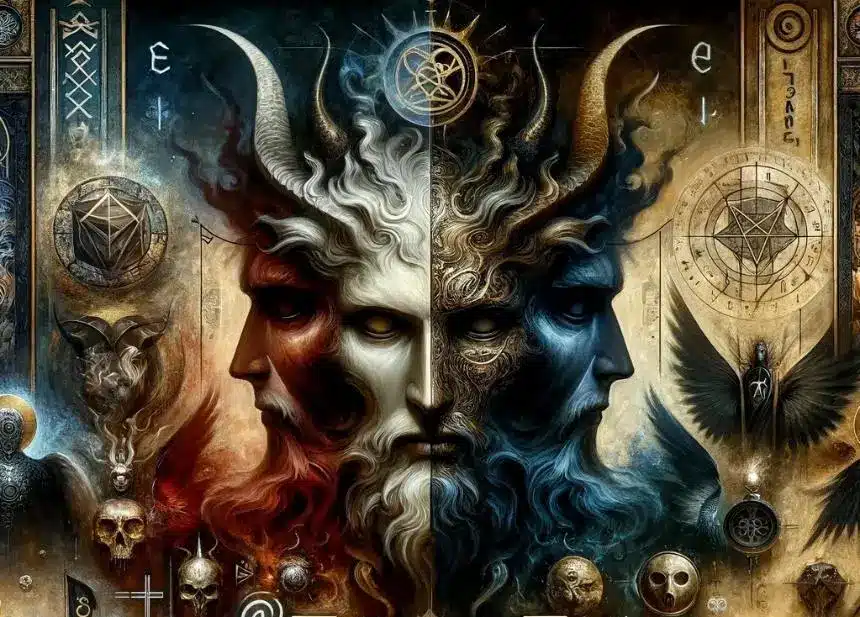
In music, satanic symbolism has been a potent force, particularly in genres like heavy metal and rock. Bands and artists have used this imagery not just for its shock value but as a means to explore and challenge societal taboos, authority, and conventional moral values. This has often led to controversy but has also opened up discussions about artistic freedom, censorship, and the role of art in society. The symbolism in this context transcends mere aesthetics, becoming a form of commentary on issues like religious hypocrisy, political oppression, and the human condition.
Satanic symbolism stands as a powerful emblem of change and resistance.
Visual arts have also seen the incorporation of satanic symbolism, often used to challenge perceptions and provoke thought. Artists have employed this symbolism to explore themes of human nature, spirituality, and the dichotomy of good and evil. This has been evident in various forms, from traditional paintings and sculptures to modern digital art and performance pieces. In each case, satanic symbolism serves as a tool for artists to express their unique perspectives and critique societal norms and values.
In literature, satanic symbolism has been a recurring theme, appearing in works ranging from classical literature to contemporary fiction. Authors have used this symbolism to delve into philosophical debates, explore moral dilemmas, and question the nature of power and corruption. The representation of Satan and satanic themes in literature often reflects broader societal issues and human struggles, serving as a metaphor for resistance, liberation, or the exploration of forbidden knowledge.
Overall, satanic symbolism in artistic expression is a testament to its enduring power and versatility as a symbol. It continues to inspire artists across various mediums, enabling them to express complex ideas and emotions, while engaging with and often challenging their audiences. This dynamic interaction between satanic symbolism and art not only enriches the cultural landscape but also fosters a deeper understanding of the symbolism’s multifaceted nature and its relevance in contemporary society.
Satanic Symbolism: Challenging Social Norms
Satanic symbolism, in its essence, represents a profound challenge to traditional social norms, particularly in the realms of gender, sexuality, and identity. This symbolism has been a tool for questioning and redefining the boundaries of societal conventions, reflecting broader changes and movements within culture.
In the context of gender and sexuality, satanic symbolism has been instrumental in challenging the rigid binary structures and norms imposed by traditional religious and societal views. It has provided a space for the exploration and expression of alternative gender identities and sexual orientations, symbolizing a rebellion against the heteronormative and patriarchal frameworks. This aspect of satanic symbolism resonates strongly with feminist and LGBTQ+ movements, aligning with their fight for equality, acceptance, and the right to personal autonomy and expression.
Moreover, satanic symbolism has been adopted by various groups and individuals as a means of asserting their identity against societal oppression or marginalization. By embracing what is traditionally viewed as ‘other’ or ‘rebellious,’ satanic symbolism empowers individuals to redefine their identity on their own terms, challenging the norms that seek to confine and define them.
The sociocultural impact of satanic symbolism is also evident in its critique of established social structures and institutions. It often serves as a commentary on the control exerted by these structures over individual freedoms and the suppression of divergent views and lifestyles. In this way, satanic symbolism becomes a vehicle for social commentary and change, advocating for a more inclusive and open society where diversity in identity and thought is not just tolerated but celebrated.
The use of satanic symbolism to challenge social norms is a reflection of its broader role in society. It is a symbol of resistance, empowerment, and the ongoing struggle for social justice. By continuously pushing the boundaries of what is accepted and challenging the status quo, satanic symbolism plays a crucial role in the ongoing discourse around identity, freedom, and equality in contemporary society.
A Catalyst for Change
In summarizing the multifaceted role of satanic symbolism, it’s clear that its impact extends far beyond its origins in religious contexts. Throughout history, this symbolism has evolved into a dynamic force, influencing politics, art, and societal norms. Its journey from ancient representations to a modern symbol of rebellion and individualism highlights its enduring relevance and adaptability.
In politics, satanic symbolism has emerged as a tool for advocacy and dissent, challenging conventional ideologies and advocating for individual freedoms and secular governance. Its use in political activism underscores a broader cultural movement towards inclusivity, equality, and rational public policy.
Artistically, satanic symbolism has been a source of inspiration across various mediums, offering a means for artists to express complex ideas and emotions while engaging with societal issues. It has encouraged artistic exploration and pushed boundaries, allowing for a deeper engagement with themes of human nature, spirituality, and resistance.
Socioculturally, satanic symbolism represents a profound challenge to traditional views on gender, sexuality, and identity, resonating with movements advocating for social justice and equality. It serves as a symbol of empowerment, encouraging individuals to redefine their identities and resist oppressive norms.
In conclusion, satanic symbolism stands as a powerful emblem of change and resistance. Its ongoing relevance and potential to influence future cultural and political landscapes are undeniable, making it a subject of continual fascination and importance in our evolving society.
This piece has been adapted from the author’s dissertation.




